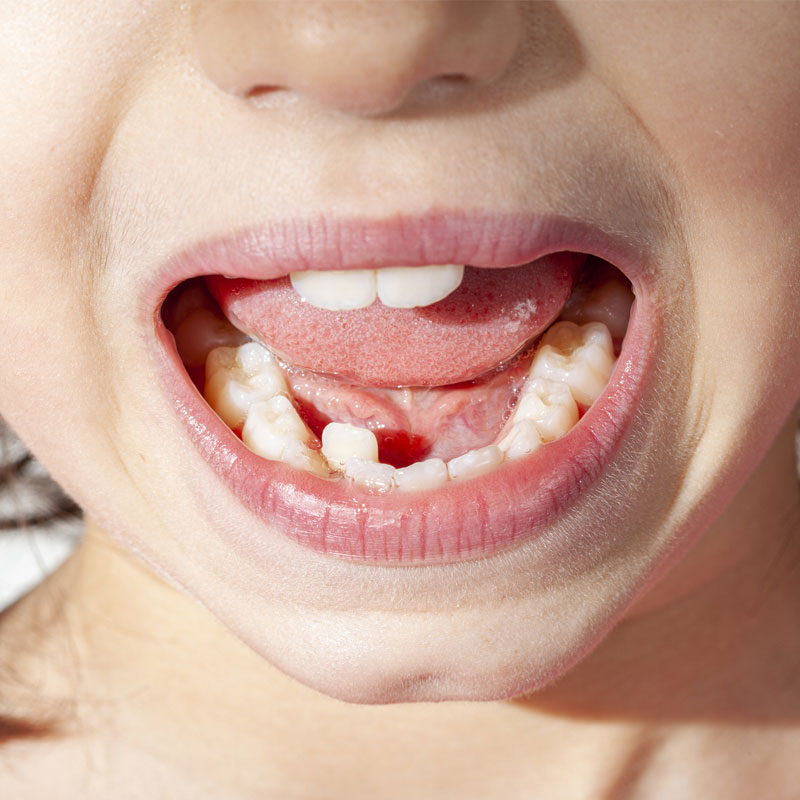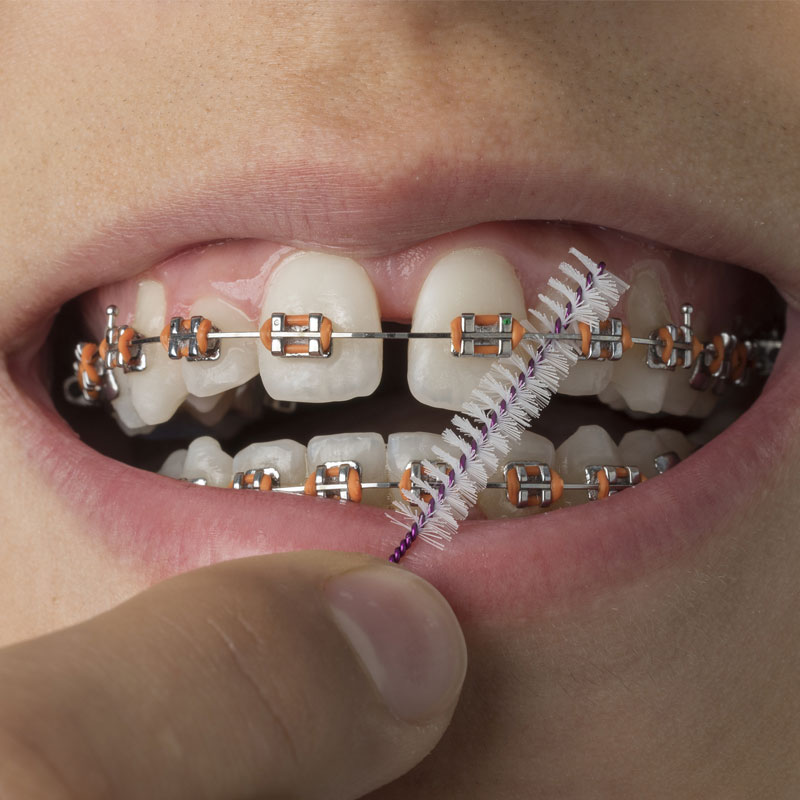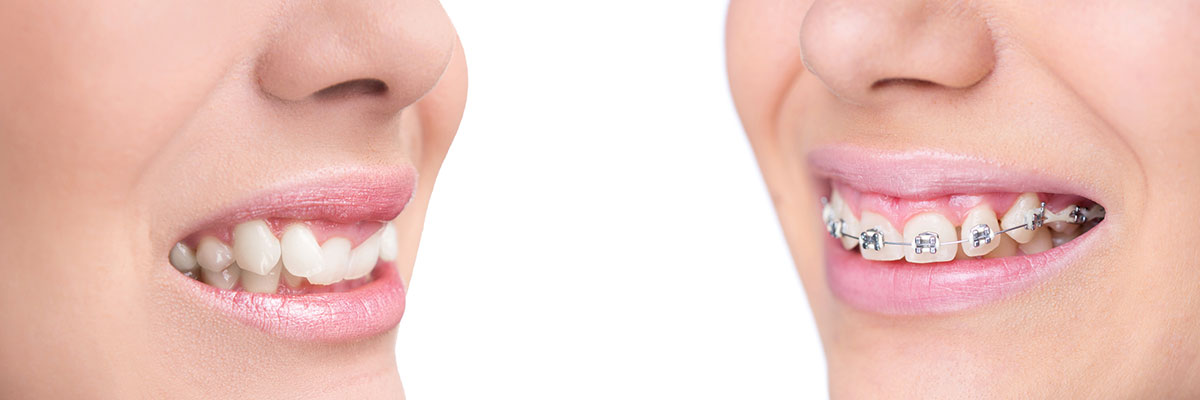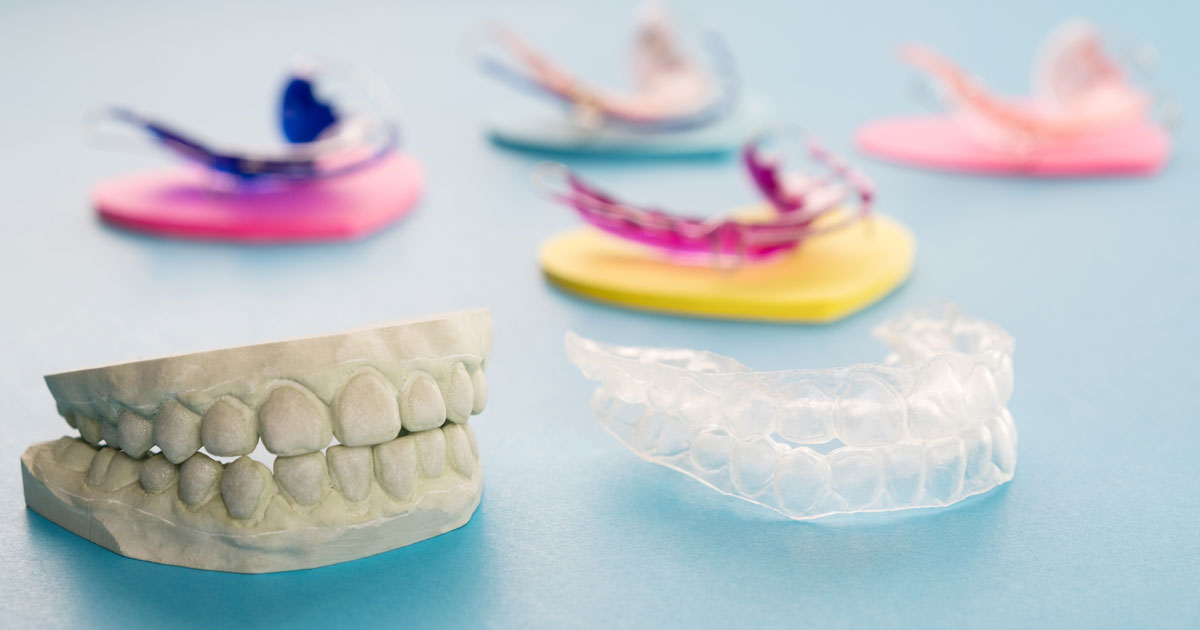Every parent dreads hearing the “B” word come out of their child’s dentist’s mouth—braces! While many parents think they are for cosmetic purposes only, some children who have misaligned teeth or bites can experience health benefits from braces, and the boost in self-esteem is just a bonus. Fortunately, too, braces are more affordable than ever before.
Learn why some children need braces for corrective treatment at an early age, signs to look for that might indicate your child needs to see an orthodontist, and what to expect if your child’s orthodontist recommends braces. Our parents’ guide to braces for kids explains the basics of braces before, during, and after treatment.
Considering Braces for Youth:
These topics are crucial as you anticipate your child’s needs for braces.
At What Age Should a Child See an Orthodontist?
The American Association of Orthodontics recommends a child have their first visit with an orthodontist at around seven years old. This is an approximate age, though, and your child’s dentist may recommend making an appointment with an orthodontist a little earlier or a little later. Seven years old is the age when most kids have a decent set of both baby and adult teeth, which makes an orthodontist’s job much easier when it comes to diagnosing tooth correction and problems with the jaw. Waiting until much later can mean surgery is more likely to be necessary.

Benefits of Early Orthodontic Treatment
Early diagnosis and treatment of misalignment, bite problems, and overcrowded teeth can prevent the need for surgery for most children. Early treatment allows the orthodontist to correct the growth of your child’s jaw and guide permanent teeth to grow straight to begin with, rather than having to move them later. Beginning treatment at a younger age also helps to adjust the upper and lower arch width and create more room for teeth to grow in, instead of teeth growing in crowded in the first place and then having to find the space for them to spread out after the fact.
Beginning braces right away also prevents some need for extracting adult teeth in the future by making room for them to grow properly ahead of time. This may also be the perfect time to correct any damage caused by thumb sucking. It‘s also the ideal age to improve minor speech problems that often correct themselves with early orthodontic corrective treatment.
Signs Braces Are Needed
You may have an inclination that your child might need braces, even if your child’s dentist hasn’t mentioned it yet.

If you notice any of the following signs, your instincts are probably right.
- Early loss of baby teeth
- Late loss of baby teeth (most kids lose their first tooth at around five years old)
- Your child has a hard time chewing or biting food
- The child breathes through their mouth
- The child sucks their thumb or fingers
- The mouth is crowded, teeth are misplaced, or teeth are blocking other teeth
- The jaw makes a popping sound or other sounds when the child opens or closes their mouth
- Tooth alignment is noticeably abnormal, or teeth do not meet or come together at all
- Disproportionate jaw and teeth to the face
- Front teeth begin to get crowded at age seven or eight
What Age Is Appropriate for Braces?
In most cases, orthodontists recommend braces when the time is ideal for the child, according to the individual situation. While it is typical to wait until a child has all their adult teeth before getting braces, preventing new teeth from shifting existing teeth out of alignment and necessitates a second set of braces, there are many advantages to early treatment, as well.
Most kids get braces between 9 and 14 years old unless overcrowding or crossbite is an early problem that would benefit from earlier treatment to expand the jaw before all the adult teeth have grown in. Sometimes it is necessary to pull some teeth to prevent the need for surgery later.
Preparing Children and Teens for Braces
These topics are important to consider if your dentist or orthodontist has recommended braces for your child.
Parents’ Guide to Braces for Teens
Typically, when teens get braces, it is something they are motivated to do because it improves their appearance and self-confidence. The upside for parents is that teens typically can follow routine care for themselves and don’t need much instruction. Younger patients tend to be harder to coerce into the maintenance of braces.
Regardless of your child’s age, make sure to talk to them before, during, and after about the importance of following the orthodontist’s instructions. Stress that proper maintenance will minimize the time they will need to wear their braces, and the likelihood of them having to wear braces again will be diminished if they take care of them and follow the doctor’s recommendations for care.
Benefits of Braces
Your child may be self-conscious of their smile if they have an overbite, underbite, or crooked teeth. Correcting cosmetic issues early on can prevent unnecessary self-esteem issues. In many cases, though, the problems are more than just cosmetic, and fixing them sooner than later can prevent dangerous oral health problems from occurring later in childhood and even in adulthood. Braces can correct problems with biting and chewing, talking and speech development, and facial and oral growth and development.

How to Prepare Kids for an Orthodontist Appointment
It might be daunting to imagine taking your child to their first orthodontist appointment, especially if they are younger. However, with a little preparation, the experience will be easier for everyone.
First, ask your child if they have any concerns.
Explain what they can expect and why they are being seen. Initial consultations shouldn’t take long. When preparing for an appointment for braces fittings, your child may be quite nervous, but there are things you can do to alleviate their concerns. Opening communications early on is best.Familiarize your child with the various procedures and treatments, as well as things like expanders and retainers. Depending on the age of your child, there may be age-appropriate videos or books available online or at your local library that can help educate both you and your child on orthodontic procedures. Be honest with your child about the slight discomfort they may experience, letting them know it will only be uncomfortable for a few days.
It is also important to discuss with your child that the length of time they will need to wear braces will depend on how well they take care of their teeth, their braces, and other appliances. Everyone is different, so the time it takes to correct one person’s smile won’t be the same amount of time it will take for another person. The amount of correction and type of correction also play a part in the time braces will need to stay on.
Tips for Wearing Braces
Below are some common concerns parents face while their child is wearing braces.
Diet Concerns
Many parents worry about their child’s diet while wearing braces. =While braces do restrict diet in a minimal sense, it’s important to weigh the lifelong benefits against dietary restrictions that are typically only a concern for the duration of treatment, which can last anywhere from six months to three years.
- Foods your child will need to avoid while wearing braces include crunchy, chewy, or hard food items like candy, gum, popcorn, potato chips, and nuts. Some kids will be happy to hear they must also avoid eating raw vegetables.
- Encourage your child to drink plenty of water to stay hydrated while wearing braces. Water is essential in removing food particles as well as in preventing cavities and tartar and plaque buildup on the teeth between the braces and cavities.
- Go shopping for some soft foods such as pasta, rice, ice cream, yogurt, apple sauce, mashed potatoes, pudding, and soup. Additionally, cold foods can be comforting after braces are initially fitted to soothe soreness.
Teaching Your Child to Care for Their Braces
Practicing good oral health habits now will last a lifetime and prolong the beauty of their aligned smile and straightened teeth. Prepare ahead of their fitting for ortho care at school and during other activities. When essential care items are readily available, it is easier to get in the habit of taking care of your child’s braces, and they will adopt the habit of taking care of their braces, as well.

- Stock up on orthodontic wax. It comes in a variety of colors and scented flavors.
- Make braces care kits for school, sleepovers, sports, or other frequent activities away from home. Include the following items:
- Toothbrush and toothpaste
- Small swish cups
- Dental floss and flossers
- Dental wax
- Rubber bands
- Lip balm
- Small mirror from the dollar store
- Orthodontic wax
- Non-perishable snacks to replace crunchy snacks at school or group activities
- Make braces care kits for school, sleepovers, sports, or other frequent activities away from home. Include the following items:
- Make multiple kits for the cars, sports bags, backpacks, and lunchboxes, and have some extra kits to grab on the go. If possible, teach your child to brush and floss after lunch, but if that’s not possible, do so immediately when they get home from school.
- Remind your child that keeping their teeth and braces clean will make their braces more effective, and they may potentially have to stay on longer if they don’t take care of them. They may even have painful problems with their braces and teeth down the road if they don’t keep them clean and well cared for.
- Some children enjoy using a Waterpik to keep their braces clean and supplement their daily brushing and flossing routines.
What to Expect at Orthodontic Follow-up Appointments
Once every four to eight weeks, your child will need to see their orthodontist for checkup appointments. These appointments typically take around 20 minutes and are checkups and maintenance appointments in which slight adjustments might be made, or the doctor might replace the wire around the brackets. The elastic bands around each bracket will also be replaced at each appointment.
Tips for When Braces Come Off
If your child is finishing up their braces treatment, consider this important information.
Preparing for Your Child’s Braces to Come Off
At your child’s final orthodontic exam, the doctor will review your child’s x-rays and measure their bite alignment. The orthodontist will also assess the health of the teeth and gums. When everything looks good, they will begin removing the braces.
Before your child gets their braces removed, have them brush their teeth and clean their braces. You may want to give them an over-the-counter pain reliever such as aspirin or ibuprofen if they are prone to sensitivity.
At the appointment, the doctor will first remove the elastic bands around each bracket and then remove the wire. Orthodontic pliers are then used to remove the brackets from the teeth. This is relatively painless and sounds worse than it is. Any remaining adhesive is also removed from the teeth. The doctor will do a final bite check and polish your child’s teeth to brighten up and clean their new smile.
Retainer Wear
After the braces are off, your child will be fitted with a retainer. Retainers are essential to the success of braces because they ensure the teeth don’t return to their old position. Talk to your child or teen about the importance of wearing their retainer. Explain to them that not wearing it would be a big waste of time after spending so much time straightening them. If their teeth shift back, they will have to get braces put back on again.

Maintain Your Smile with Our Gilbert, AZ Orthodontics Team
As your child enjoys sharing their new smile with the world, remind them to continue taking care of their teeth. Keep them brushing and flossing regularly and after meals and seeing their regular dentist every six months to maintain their oral health and straight smile.
By the time your child completes treatment and gets their braces off, you might be considering getting braces yourself. Adults can get braces too. You’re never too old to improve your smile and boost your self-esteem. Learn more about braces for all ages from Robison, orthodontics in Gilbert, AZ.

Dr. Tyler Robison is an alum of Mesa’s Mountain View High School. He graduated from Brigham Young University before being accepted to the “Top Ten-nationally ranked” University of Louisville in Kentucky, where he earned his Doctorate in Dental Medicine and a Master’s Degree in Oral Biology. He graduated with honors in the top ten percent of his class. Dr. Robison continued at the University of the Pacific in San Francisco, where he received a second master’s degree in dental science and his orthodontic certification.


